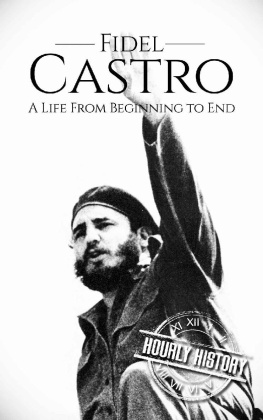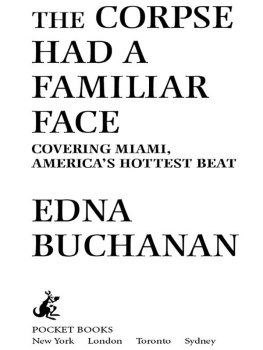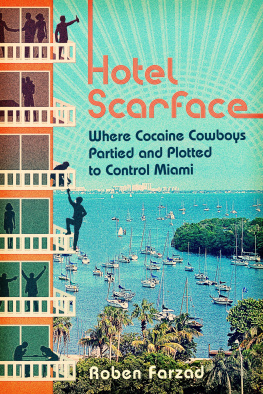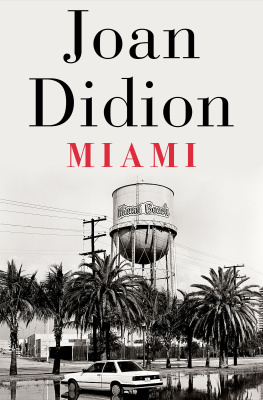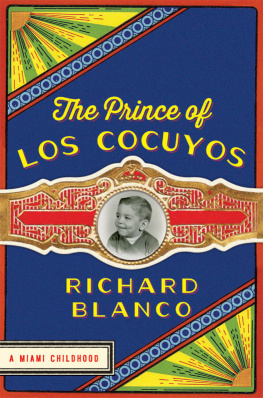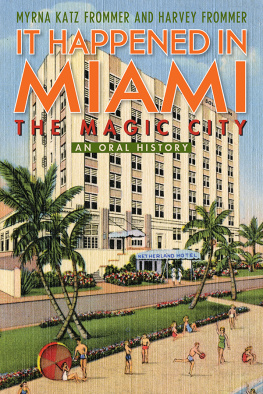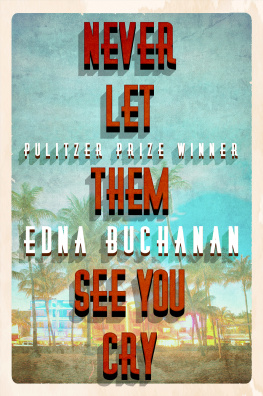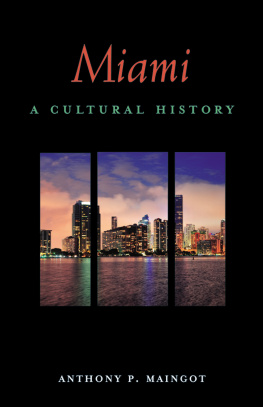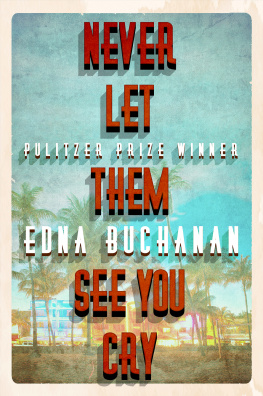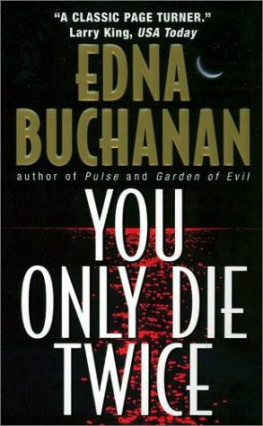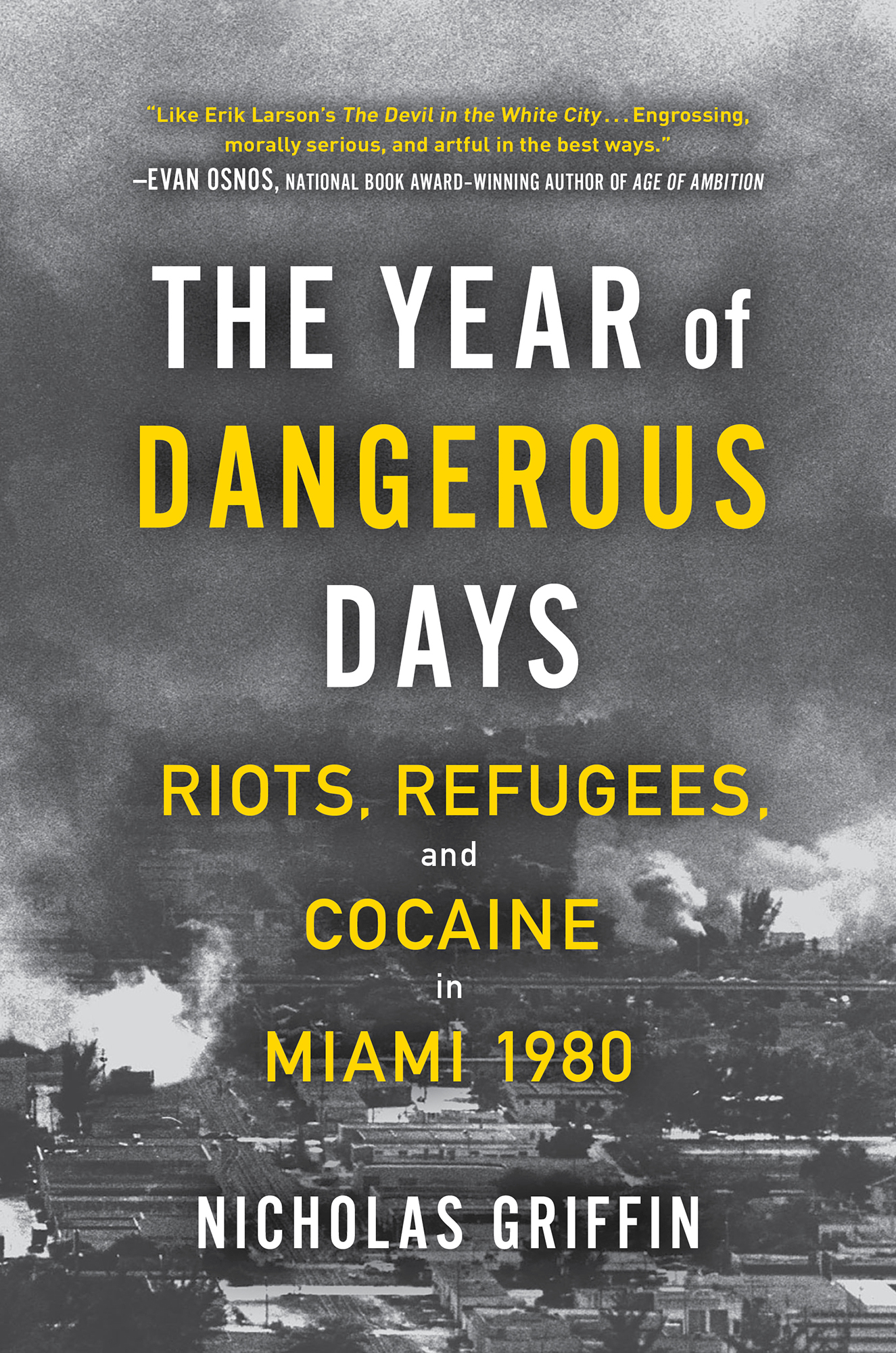Contents
Guide
ALSO BY NICHOLAS GRIFFIN
Ping-Pong Diplomacy
Dizzy City
The Masquerade
The House of Sight and Shadow
Caucasus: Mountain Men and Holy Wars
The Requiem Shark

Simon & Schuster, Inc.
1230 Avenue of the Americas
New York, NY 10020
www.SimonandSchuster.com
Copyright 2020 by Nicholas Griffin
All rights reserved, including the right to reproduce this book or portions thereof in any form whatsoever. For information, address Simon & Schuster Subsidiary Rights Department, 1230 Avenue of the Americas, New York, NY 10020.
First 37 INK / Simon & Schuster hardcover edition July 2020
37 INK / SIMON & SCHUSTER and colophon are trademarks of Simon & Schuster, Inc.
For information about special discounts for bulk purchases, please contact Simon & Schuster Special Sales at 1-866-506-1949 or .
The Simon & Schuster Speakers Bureau can bring authors to your live event. For more information or to book an event, contact the Simon & Schuster Speakers Bureau at 1-866-248-3049 or visit our website at www.simonspeakers.com.
Interior design by Carly Loman
Jacket design by Jason Heuer
Jacket photograph Taken of the Miami Riots, 1980; The Miami Herald 2020 McClatchy.
Library of Congress Cataloging-in-Publication Data is available.
ISBN 978-1-5011-9102-2
ISBN 978-1-5011-9104-6 (ebook)
To Adriana, Toms, and Evamy loves
AUTHORS NOTE
When it comes to South Floridas local terminology, I have opted to go with 1980s usage rather than todays. 2020s Miami-Dade County is referred to as Dade County. Todays Miami-Dade Police Department was once the PSD (Public Safety Department), etc.
It is important to note that this is a book based on interviews and public records. No names have been changed. All exchanges that occurred in the context of the trial of the police officers involved in the death of Arthur McDuffie were directly quoted from either trial transcripts, television recordings of the trial, or direct quotations carried in local newspapers. Outside of the context of the trial, scenes and conversations have been reconstructed from statements made by individuals featured in the book at public events and/or in the course of interviews and have been reconstructed from recordings, memory or notes, to the best of my ability.
PROLOGUE
APRIL 23, 1979
At noon, amid light traffic on the Florida Turnpike, a black Audi swerved at high speed attempting to outrun a Pontiac Grand Prix. The cars careened toward the end of the highway, where it dovetailed into Miamis main thoroughfare, US 1, used by suburban southern Dade County to connect to the city. A man with thick sideburns leaned out the window of the Pontiac holding a revolver. Hed already blown out the back windshield of the Audi and sunk four more bullets into its chassis. Returning fire amid the shattered glass on the back seat of the Audi was a young man with a smudge of a mustache and long, dark hair whipping in the wind. Wearing a white dress shirt and crisp black slacks, he used both hands to fire an Ingram MAC-10 fitted with a suppressor.
Bewildered witnesses numbered in the dozens as the two cars decelerated and entered US 1. At the corner of Caribbean Boulevard the cars slowed long enough for a man to leap out of the passenger seat of the Audi. He positioned himself behind a traffic control box in front of the cowboy-themed cafeteria Westward Ho and raised a 9mm pistol to exchange fire with the Grand Prix as it returned to creep past him.
The chase only ended because a new one began. Officers in a passing patrol car spotted the three remaining armed men in the Audi. Flipping their lights and sirens on, they began a second high-speed pursuit on crowded US 1. The astonished policemen watched a man lean out of the rear of the Audi and spray their patrol car with machine-gun fire. Two miles later, the Audi pulled over close to a wooded area and the three men sprinted into the trees, untouched by police gunfire.
Panting and covered in scratches, one of the fugitives was soon captured wearing only a snug yellow bathing suit. Talking to the police in Spanish, he claimed hed been jogging, become disorientated, and somehow lost his shoes. He was driven back to the Audi just in time to watch a crime-scene technician pop the trunk. Inside lay a corpse outfitted in brown, from socks to shoes, shirt to trousers. In contrasting stark white were the adhesive tape that covered his mouth and the 45 pounds of white powder pressed against his body in an open duffel bag. Moments later, the gunman whod hidden himself behind the traffic control box was also found, nonchalantly browsing car parts in an automotive center while bleeding from a shoulder wound. Hed been watching through the window as police interviewed witnesses less than a hundred meters away.
It would be the first large investigation for the brand-new captain of the county homicide bureau, Marshall Frank. Previously, he had worked as a detective sergeant in homicide for seven years before leading the crime-scene section. A heavy smoker, Frank dressed in J. C. Penney suits and aviator sunglasses and carried a small bottle of Old Spice in his pocket alongside a handkerchief to mask the heavy stench of Florida decompositions.
A week into the investigation, Frank received a kind note from State Attorney Janet Reno, congratulating him on his departments performance. Seven days later brought a swing in mood. A grand jury had refused to indict either of Franks suspects on murder, citing a lack of prosecutorial evidence. It has come to my attention that the Department now considers this to be a case of second order priority, Reno wrote, reminding Frank that if the murder case wasnt brought to trial within one hundred and eighty days of the arrest, both men would automatically receive immunity. Frank, she chided, needed to force his detectives to develop the evidence and tie the suspects directly to the body.
The investigative files doubled in thickness and doubled again. Eighty-one leads were pursued that led Franks men to stolen cars, a murdered maid, abduction, aggravated assaults, immigration offenses, organized crime, and concealed firearms. Yet despite the combined efforts of Reno and Frank, the grand jury still refused to indict the suspects on anything other than weapons violations and assault charges.
Within a month on the job, Marshall Frank began to understand how difficult a post he had been handed. It came with pressure from the state attorney and from Miamis news media. The body in the trunk wasnt a simple murder. It involved a fledgling cocaine industry, illegal immigration, and violent acts executed in public. What Frank couldnt yet understand was that the case also concerned corruption. The Federal Bureau of Investigation was involved. The Bureau had opened a secret investigation before Frank had even arrived. While Marshall Frank joined Reno in worrying about the rising number of fatalities in the county, the FBI worried that the 45 pounds of milk sugar found in the back of the trunk had been placed there by Franks detectives to conceal their theft of an equal amount of cocaine.
Was the homicide bureau itself corrupt? Miami would have little else to lean on if Janet Reno was correct in her belief that the countys murder rate was beginning an unusual acceleration. Still, in the middle of 1979, it was very hard to guess at the extent of Miamis looming crisis.




